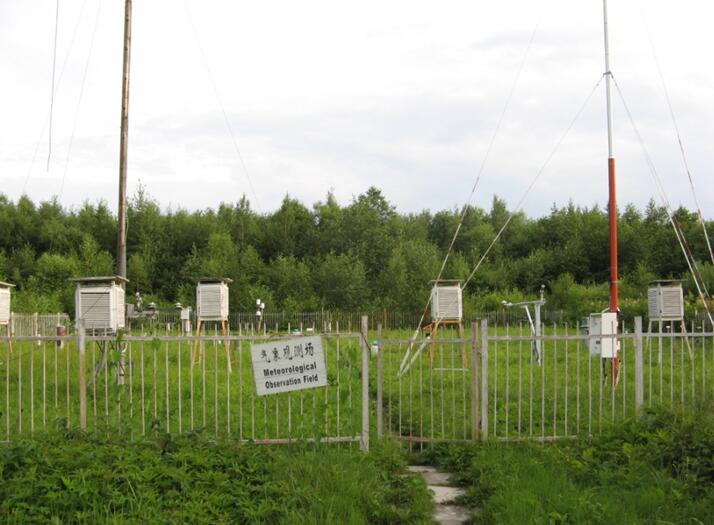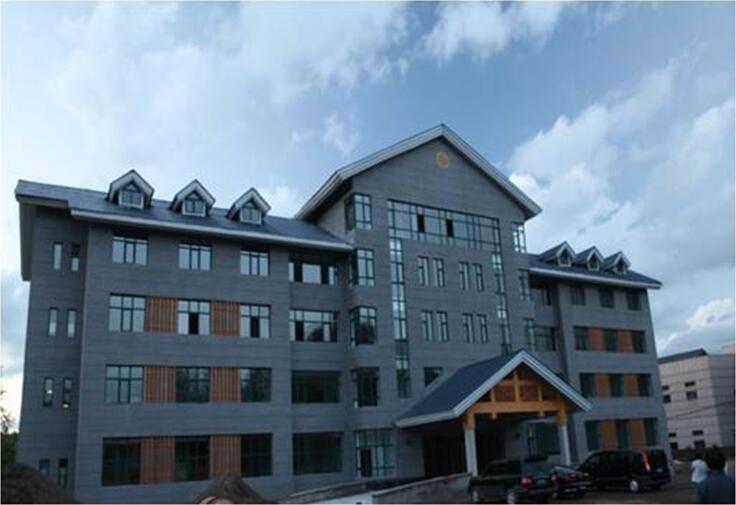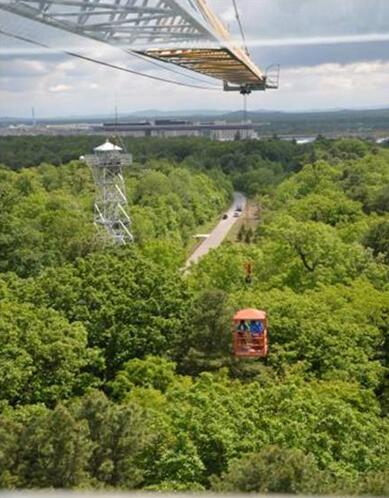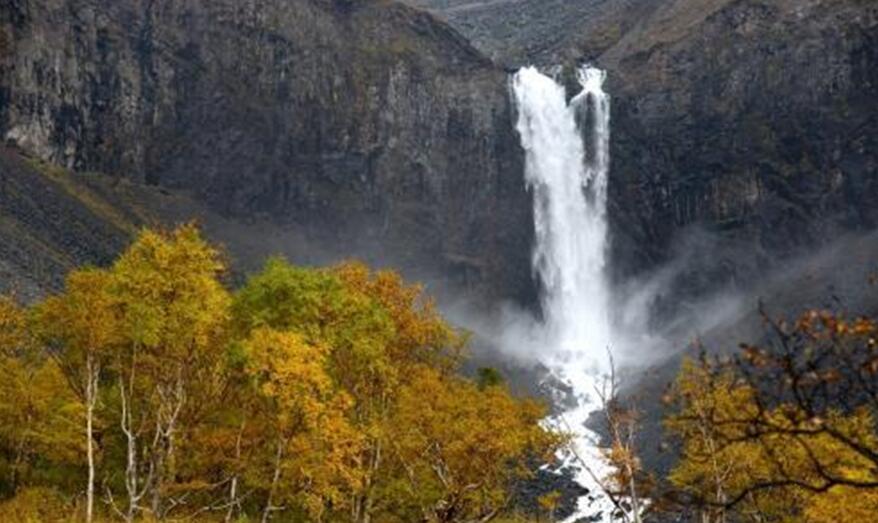About the station
1. Introdution
Changbai Mountain is one of the most valuable reserves for its various natural ecosystems and rich gene pool, especially for the altitudinal vegetation zonation in the mountain. This makes it a non-substitutive ecological research site. For a long-term forest ecological research, the Institute of Forestry and Soil Sciences (presently, the Institute of Applied Ecology) was entrusted by the Chinese Academy of Sciences (CAS) to establish the station in 1979, and the station joined the MAB program in the same year. It was promoted as an "Opened Research Station" by the Chinese Academy of Sciences in 1989, selected as a key research station by Chinese Ecosystem Research Network (CERN) in 1992, and has played an important role in International Long Term Ecological Research Network (LTER) since 1993. It was ratified as National Research Station in 2005 and named as “National Research Station of Changbai Mountain Forest Ecosystems ” ever since.
Geographical location and Vegetation: The station is situated in the northern slope of Changbai Mountain, within the National Reserve and Erdaobaihe Town, Antu County, Jilin Province, with 42°24' N latitude, 128°28'E longitude, and 736m altitude. The researches of the station cover the original and disturbed ecosystems along the northern slope of Changbai Mountain. There are 5 vegetation zones arranged from lower to higher elevations. The broadleaf-Korean pine mixed forest is below 1,100m. The coniferous forest distributed between 1,100m and 1,700m parallels to the boreal forests on a horizontal means; the Erman's birch forest extended from 1,700m to 2,000m is an unique dwarf forest in the higher mountain; the alpine tundra is above 2,000m. The original forest ecosystems in Changbai Mountain are typical natural representatives of N. E. Eurasia.

Changbai Mountain Station Location
Research directions: Regarding the global hot issues in population, environment, and resources, the major research objectives in the station are to reveal the law of structure, function, and dynamics of the forest ecosystems, to express the response of forest ecosystems to human activities and environment changes, and to find the effective ways of sound management and sustained development of the forest resources.
Current research projects: The aim of the research is the global change and sustained development of forest ecosystems. There are 3 major fields of researches: (1) Carbon cycle process, including carbon cycle of forest ecosystems, influences of enrichment of CO2 on water transferring of root-soil interface of typical tree species, eddy covariance measurements of CO2 flux between the forest ecosystem and atmosphere, chamber measurements of soil CO2 flux and so on; (2) Water cycle process, including modeling of evapotranspiration, mechanism of forest hydrology process and regulation of water resource in watershed. (3) Management and sustained development of forest ecosystems, including forest resource management in northeast of China, healthiness and benefit assessments of forest ecosystem, dynamics and sustained management of typical forest ecosystem.
3.1 Management system of the Korean pine-mixed broadleaf forest ecosystem
As early as 1980, Prof. Wang zhan put forward the thought on sustainable management of forests that “selective planting and cutting” and “planting conifers and preserving the broadleaf”,to solve the problem of cutting mode and the secondary forest restoration of broad-leaved Korean pine forest cutover land in Northeast of China. In 1983, through investigating, Prof. Xu Zhenbang et al found the about 60 years development interval of forest gap agrees with the renewal for generations, and thought that the disturb is the impulsion of regeneration of broad-leaved Korean pine forest, especially the gap renewal of Korean pines. In 1980, Cui Qiwu et al, from the homeostasis viewpoint of the ideal cutting interval and mode of forests’ growth quantity in successive years, brought forward the math model of continuous exploitation of forests, and in 1985, from the nutrition dynamics theory, educed a new basic equation of the population growth (The Cui law). Dr. Shao Guofan (2002), by the matrix model, forecasted each diameter dynamics of the different aged broad-leaved Korean pine forest under
different cutting strategy, and developed the software of “the aptitude 3S system of the forest management” (FORESTAR),which is proved by the application of the software to the Baihe Forest Bureau. Dr. Liu Guoliang (2003), by FSOS, marked elementarily programming of the sustainability of forest of the Baihe Forest Bureau. These theories noted above are the scientific basis of the ecological management of the forest ecosystem.
3.2 Mechanism of forest eco-hydrological processes and model construction
Long-term field observation and laboratory simulation were conducted to analyze the interaction between eco-hydrological processes and the broad-leaved Korean pine forest. The primary progress is as follows.
(1)The mechanism of eco-hydrological process: A semi-theoretical model of canopy rainfall interception model was established, which calculated the distribution of rainfall process in forest canopy for any period of time, and discussed the mechanism of the rainfall redistribution process in forest vegetation canopy. The logarithmic sub-models that saturated conductivity and effective porosity vary with depth was put forward, depended on which the modified storage—discharge mode1,compared with the famous Sloan’s and Robinson’s, was 15% more accurate when simulating in subsurface flow and 20-32% in total runoff. Through rainfall-runoff simulation experiments conducted on a manmade hillside, the relationship between the average water depth on the hillslope and that at the outlet, which is nearly a quadratic curve, is obtained. The relationship is different from the assumption, in which the average water depth on the hillslope is equal to that at the outlet; thereby the classical hillside rainfall-runoff Horton model which had been used for many years was modified, so that both the theoretical and experimental basis was provided for hillside rainfall-runoff process. Understanding of the mechanisms of these processes, such as rainfall distribution, subsurface flow, evaporation and hillside rainfall-runoff, and model construction put forward new theoretical basis and sub-models for watershed eco-hydrological model construction and amelioration.
(2) Construction of forested watershed rainfall-runoff models
The conceptual forested watershed storm-runoff model was established, which calculated the relationships in different forest quantities and qualities between watershed rainfall-runoff ,analyzed and appraised the effect of ecological damage in jamming on forested watershed flood disaster, put forward the control countermeasures to forested watershed flood disaster and ecological engineering flood control and disaster mitigation system. Distributed rainfall-runoff model was constructed in the middle watershed, and the model structure was applied separately on the large and small watershed to simulate rainfall-runoff response processes, which showed good fittings with observed series, with the coefficient of efficiency above 0.65 and the peak discharges and peak times close to measured ones. By elucidated the effect on hydrological process of forest vegetation changes and constructed distributed hydrological model, exact simulation of watershed hydrological process was implemented.
3.3 Korean pine-mixed broadleaf forest in Changbai Mountain as a carbon sink of atmosphere
The average age of natural Korean pine-mixed broadleaf forest in Changbai Mountain is about 200 years,however, there was no scientific study on principles of its carbon process and its role played in global carbon cycle before 2002. The results of eddy-covariance measurements for carbon flux showed that net ecosystem exchange (NEE) in this forest ecosystem ranged from 317 to 171 g m-2year-1, which was higher than that in boreal forest (68 C g m-2year-1; Gower et al. 1997) ,but lower than that in North American temperate forest (585 C g m-2year-1; Turner et al. 1995; Malhi et al. 1999). NEE calculated through biometry method was 366.8±110.6 C g m-2year-1, 16% higher than the maximum value calculated using eddy-covariance techniques.
Those studies above proved the carbon sink capacity of the natural Korean pine-mixed broadleaf forest in Changbai Mountain, and also provided scientific foundation for evaluating scientifically the carbon exchange of the forest succession from secondary temperate forest to the zonal climax forest of our country.
3.4 The diversity of plants and microorganisms
Based on years of observation, studies were conducted on the distribution pattern of the main species along elevation gradient and its substitution law along elevation in Changbai Mountain; a and b diversity of plant community and its change law under different sampling scales; the gradient change of community diversity and the relationship between the distribution pattern of the main species and environment factors. The results showed that the number and the diversity index of plant species decreased with increase of elevation; the common degree of different classifications decreased with increment in the elevation difference.
There were new findings in forest mycology field: a new genus, twenty new species, nine new combining species, five new record genus and thirty-six new record species in China; moreover new classification systems were put forward about Hydnochaete tabacina. Meanwhile, five new pathogenic bacteria of forest disease were reported. Through the study on mating of heterobasidiomycetes, it was conformed that heterobasidion annosum sensu lato — the most destructive pathogeny of forest disease did not exist, which provided important basis for guard against biology invasion. Through the genetics study on heterobasidion insulare sensu lato, a new mating type was found firstly that mycelium formed from unit cell growth had clampconnection. Due to the study on the new mating type, it was found that heterobasidion insulare sensu lato in Eastern Asia area was aggregate species and proved it had five intersterility groups named five new species. In addition, the finding of semi-mating type of heterobasidion parviporum revealed the genetic diversity and antiquity which play a significant role in studying origin and evolution of heterobasidiomycetes.
3.5 Demonstration on intensification of pinus koraiensis breeding
Pinus koraiensis seed orchard in Dew River Forestry Administration which established in 1984 has the sources of gene breeds of Pinus koraiensis in Northeast Asia, North Asia and Central Asia. Currently, there is a 182.3 hectares’ seed orchard, including production region, collection region, descendant determination region, experimentation forest region and shelter-forest region. 1012 superior trees are selected in the seed orchard and the clone orchard is being at the phase of producing fruit. Through years of construction, the seed orchard has been developed into an integrated base of seed multiplication encompassing gene collection, scientific research, demonstration and generalization, with special emphasis on well-born seed production. In recent years, this orchard has cooperated with our station to do biological study at the molecule scale, including identification of 150 well-born clones and selection of 56 excellent series. These works provides scientific basis for the establishment of highly generational seed orchard, the maintenance of superior sources and the construction of well- born base.
1. 人员组成 Personnel
王安志,研究员,站长,森林水文学
Wang Anzhi, Professor, Drector,forest hydrology
韩士杰,研究员,森林界面生态学、森林生态系统碳循环
Han Shijie, Professor, Forest-boundary ecology, carbon cycle in forest ecosystem
金昌杰,研究员,森林水文学、森林气象学
Jin Changjie, Professor, forest hydrology, forest meteorology,forest management
代力民,研究员,森林生态学,森林经营管理
Dai Limin, Professor, Forest ecology, Forest management
关德新,研究员,森林气象学、森林生态系统碳循环
Guan Dexin, Professor, Forest meteorology, carbon cycle in forest ecosystem
于大炮,研究员,副站长,森林生态学,森林经理学
Yu Dapao, Professor, Vice-Drector,forest ecology, Forest management
郝广友,研究员,树木生理学
Hao Guangyou,Professor, Tree Physiology
白娥,研究员,生物地球化学循环
Bai e,Professor, Biogeochemical cycle
王淼,研究员,树木生理学、森林生态系统碳循环
Wang Miao, Professor, Tree physiology, carbon cycle in forest ecosystem
郝占庆,研究员,森林生态学,森林植物多样性,森林管理
Hao Zhanqing, Professor, forest ecology, forest plant diversity
王绪高,研究员,森林生态学,植物多样性
Wang Xugao,Professor,forest ecology,forest plant diversity
袁海生,研究员,菌物学
Yuan Haisheng, Professor, mycology
曹伟,研究员,森林植物学
Cao Wei, Professor, forest botany
张军辉,研究员,森林界面生态学、森林生态系统碳循环
Zhang Junhui, Professor, Forest-boundary ecology, carbon cycle in forest ecosystem
吴家兵,研究员,森林气象学、森林生态系统碳循环
Wu Jiabing, Associate professor, Forest meteorology, carbon cycle in forest ecosystem
叶吉,副研究员,森林植物多样性
Yeji, Associate professor, forest plant diversity
2.Publications
[1] Yumei Zhou, Mai-He Li, Xu-Bing Cheng, Cun-Guo Wang, A-Nan Fan, Lian-Xuan Shi, Xiu-Xiu Wang, Shijie Han. 2010. Soil Respiration in Relation to Photosynthesis of Quercus mongolica Trees at Elevated CO2. PLOS ONE e15134.(IF= 4.35, Citations=0)
[2] Xuefeng Li, Shijie Han, Zhongling Guo, Diankun Shao, Lihua Xin. 2010. Changes in soil microbial biomass carbon and enzyme activities under elevated CO2 affect fine root decomposition processes in a Mongolian oak ecosystem. Soil Biology & Biochemistry 42 (2010) 1101e1107. (IF=2.98, Citations=0)
[3] Xuefeng Li, Yanling Hu, Shijie Han*, Ying Liu, Yan Zhang. 2010. Litterfall and litter chemistry change over time in an old-growth temperate forest, northeastern China. Ann. For. Sci. 67: 206 .(IF=1.44, Citations=0)
[4] Xuefeng Li, Xingbo Zheng, Shijie Han, Junqiang Zheng, and Tonghua Li. 2010. Effects of nitrogen additions on nitrogen resorption and use efficiencies and foliar litterfall of six tree species in a mixed birch and poplar forest, ortheastern China. Can. J. For. Res. 40: 2256–2261. (IF=1.25, Citations=0)
[5] J . Q . Zheng, S. J. Han*, Y. Wang , C. G. Zhang & M. H. Li. 2010. Composition and function of microbial communities during the early decomposition stages of foliar litter exposed to elevated CO2 concentrations. European Journal of Soil Science,61, 914–925.(IF=2.13, Citations=0)
[6] Min-Min Chen, Fujuan Feng, Xin Sui, Mai-He Li, Dan Zhao, Shijie Han*. 2010.Construction of a framework map for Pinus koraiensis Sieb. et Zucc. using SRAP, SSR and ISSR markers. Trees 24:685–693.(IF=1.60, Citations=0)
[7] Min-Min Chen, Fujuan Feng, Xin Sui1 and Shijie Han*. 2010.Genetic linkage maps of Pinus koraiensis Sieb. et Zucc. based on AFLP markers. African Journal of Biotechnology 9(35):5659-5664. (IF=0.565, Citations=0)
[8] ZHENG Jun-Qiang, HAN Shi-Jie*, ZHOU Yu-Mei, REN Fei-Rong, XIN Li-Hua and ZHANG Yan. 2010. Microbial Activity in a Temperate Forest Soil as Affected by Elevated Atmospheric CO2. Pedosphere 20(4): 427–435.(IF=1.103, Citations=0)
[9] Chuixiang Yi, Shijie Han et al. 2010.Climate control of terrestrial carbon exchange across biomes and continents. Environ. Res. Lett. 5, 034007 (10pp). (IF=3.34, Citations=0)
[10] Honglin He, Min Liu, Xiaomin Sun, Li Zhang, Yiqi Luo, Huiming Wang, Shijie Han, Xinquan Zhao, Peili Shi, Yanfen Wang, Zhu Ouyang, Guirui Yu. 2010. Uncertainty analysis of eddy flux measurements in typical ecosystems of ChinaFLUX. Ecological Informatics 5: 492–502.(IF=1.299, Citations=0)
[11] Fu-Juan Feng, Xin Sui, Min-Min Chen, Dan Zhao, Shi-Jie Han*, Mai-He Li. 2010. Mode of pollen spread in clonal seed orchard of Pinus koraiensis. Journal of Biophysical Chemistry 1:33-39. (IF=2.36, Citations=0)
[12] N. Saigusa, K. Ichii, H. Murakami, R. Hirata, J. Asanuma, H. Den, S.-J. Han, R. Ide, S.-G. Li, T. Ohta, T. Sasai, S.-Q. Wang, and G.-R. Yu. 2010. Impact of meteorological anomalies in the 2003 summer on Gross Primary Productivity in East Asia. Biogeosciences 7: 641–655. (IF=3.45, Citations=2)
[13] Shi Ting-Ting, Guan De-Xin, Wang An-Zhi, et al. 2010. Modeling canopy CO2 and H2O exchange of a temperate mixed forest. Journal of Geophysical Reaearch-Atmosphere 11: D17117. (IF=3.08, Citations=0)
[14] WANG Miao, Guan De-Xin, HAN Shi-Jie and WU Jing-Lian. 2010. Comparison of eddy covariance and chamber-based methods for measuring CO2 flux in a temperate mixed forest. Tree Physiology 30:149–163. (IF=2.28, Citations=0)
[15] Jiabing Wu, Xinjian Zhang, Haolei Wang, Jinwei Sun, Dexin Guan. 2010.Respiration of downed logs in an old-growth temperate forest in north-eastern China. Scandinavian Journal of Forest Research, 25(6): 500-506(IF=1.26, Citations=0)
[16] Jiabing Wu, Lars Kutzbach, Daniel Jager, Christian Wille, and Martin Wilmking.2010. Evapotranspiration dynamics in a boreal peatland and its impact on the water and energy balance. Journal of Geophysical Research, 115, doi:10.1029/2009JG001075(IF=3.20, Citations=0)
[17] Zhang Xiaojing, Guan Dexin, Wu Jiabing, Wang Anzhi,2010. The Effects of Rain Pulse on Soil Respiration. International Conference on Future Computer, Control and Communication (FCCC 2010). 3: 318-323
[18] Wang X., Wiegand T., Hao, Z., Li B., Ye, J., Lin F.2010. Spatial associations in an old-growth temperate forest, Northeastern China. Journal of Ecology, 98: 674-686. (IF=4.69, Citations=0)
[19] Wang, X., Ye, J., Li, B., Zhang, J., Lin, F., Hao, Z. Spatial distributions of species in an old-growth temperate forest, northeastern China. Canadian Journal of Forest Research, 40: 1011-1019. (IF=1.246, Citations=0)
[20] Jian Zhang, Bo Song, Bu-Hang Li, Ji Ye, Xu-Gao Wang, Zhan-Qing Hao.2010. Spatial patterns and associations of six congeneric species in an old-growth temperate forest. Acta Oecologia,36:29-38.(IF=1.609, Citations=1)
[21] Xingkai Xu, Lin Han, Xianbao Luo and Shijie Han.2010.Synergistic effects of nitrogen amendments and ethylene on atmospheric methane uptake under a temperate old-growth forest. Advances in Atmospheric Sciences,doi:10.1007/s00376-010-0071-7. (IF=0.691, Citations=0)
[22] Junhui Zhang, Xuhui Lee, Guozheng Song, Shijie Han.2010. Pressure correction to the long-term measurement of carbon dioxide flux..Agricultural and Forest Meteorology, 151 (2011) 70–77.(IF=3.2, Citations=2)
[23] Liu Z, He HS, Chang Y, Hu Yuanman.2010. Analyzing the effectiveness of alternative fuel reductions of a forested landscape in Northeastern China. Forest Ecology and Management,259: 1255-1261. (IF=1.95, Citations=0)
[24] Jin LR, He HS, Zhou YF, Bu RC and Sun KP.2010. Assessing the effects of management alternatives on habitat suitability in a forested landscape of northeastern China. Environmental Management, 45:1191–1200. (IF=1.408, Citations=0)
[25] J Zhang,X Lee,G Song,S Han.2011. Pressure correction to the long-term measurement of carbon dioxide flux. Agricultural and Forest Meteorology, 151(1):70-77.(IF=2.89, Citations=11)
[26] E Bai ,BZ Houlton,Y Wang.2012. Isotopic identification of nitrogen hotspots across natural terrestrial Ecosystems , Biogeosciences Discussions, 8(6):12113-12152. (IF=4.178, Citations=28)
[27] X Wang,T Wiegand ,A Wolf,R Howe,SJ Davies,et al.2011. Spatial patterns of tree species richness in two temperate forests, Journal of Ecology , 99(6):1382-1393.(IF=6.499, Citations=41)
[28] J Zheng,Z Xu,Y Wang,H Dong,C Chen,et al.2014. Non-additive effects of mixing different sources of dissolved organic matter on its biodegradation, Soil Biology & Biochemistry, 78(78):160-169. (IF=5.437, Citations=6)
[29] D Xing,NG Swenson,MD Weiser,Z Hao.2014.Determinants of species abundance for eastern North American trees, Global Ecology & Biogeography, 23(8):903-911. (IF=7.53, Citations=4)
[30] X Wang,T Wiegand,NG Swenson,AT Wolf,RW Howe,et al.2015.Mechanisms underlying local functional and phylogentic beta diversity in two temperate forests, Ecology, 96(4):1062-1073. (IF=5.768, Citations=9)
[31] Li Weibin, Wu Jiabing, Bai Edith, Jin Changjie, Wang Anzhi, Yuan Fenghui and Guan Dexin. 2016.Response of terrestrial carbon dynamics to snow cover change: A meta-analysis of experimental manipulation, Soil Biology and Biochemistry,103:388-393(IF=4.152, Citations=7)
[32] Wang Xugao, Thorsten Wiegand, Nathan J. B. Kraft, Nathan G. Swenson, et al.2016. Stochastic dilution effects weaken deterministic effects of niche-based processesin species rich forests, Ecology,2016,97(2): 347-360(IF=4.733 Citations=2)
[33 Wang Chao, Benjamin Z.Houlton, Dai Weiwei and Bai Edith. 2017.Growth in the global N2 sink attributed to N fertilizer inputs over 1860 to 2000, Science of the Total Environment, 574:1044-1053(IF=3.976 Citations=0)
3.Contact information
Director: Dr. Wang Anzhi
Address: 72# Wenhua Road, Shenyang, 110016, China
Tel : +86-24-83970337
Fax: +86-24-83970300

Meteorological Observation Field

Flux Tower

Northeastern Asian Botanical Garden

Expert apartment

Canopy tower crane

Erdaobaihe River

Changbai Mountain falls



